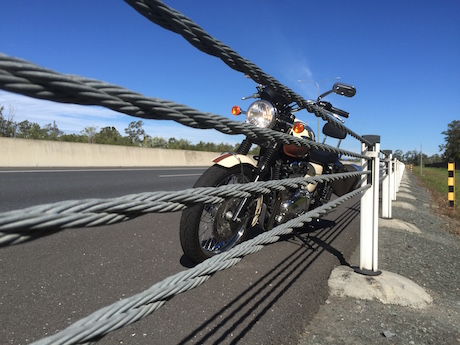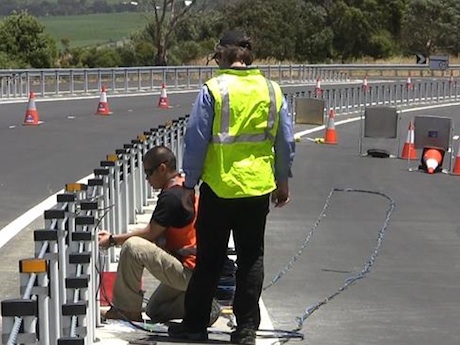Governments which install roadside barriers that are potentially lethal to riders could be criminally culpable for any deaths or injuries, warns the Motorcycle Advocacy Group (MAG).
The group points out that there are registration and ongoing requirements for engineers involved in roadworks and failure to take into consideration the safety of motorcyclists would constitute a breach.
It also warns that Queensland has recently updated its Work Health and Safety and Other Legislation Amendment Act 2017 to include the crime of industrial manslaughter.
In the wake of the announcement of proposed $11.3 million of roadworks for the Mt Glorious area, MAG member David White has written to the Department of Transport and Main Roads warning that the Act makes the department criminal culpable for injuries and deaths.
“It would be difficult for any organisation to not respect the intent of this type of legislation and to consider its impact if through their actions they cause a death,” the letter says.
“Society now has an expectation that the manager, officers, engineers, designers and installers are all well aware of this type of legislation and will ensure that they do not intentionally create an unsafe environment for motorcyclists.”
Ban new barriers
MAG has a particular concern about installing any new barriers.
However, the department told us recently that the Mt Glorious roadworks project is still in the design stage and there are no specific plans in place yet. Click here for more details.
“For motorcyclists, the inclusion of any barrier has the potential to change a low-risk situation into one where the certainty of significant damage or death is increased to 100%,” the MAG letter says.
“Therefore we expect that any design will take into account the risk to motorcyclists and the designers will meet their obligation under this Act so that the project outcome will be a reduction in the risk, not increasing risk by simply imposing additional barriers that will cause certain death or injury to motorcyclists.
“No barrier and a clear run-off area is the safest design as demonstrated at MotoGP sites where riders walk away from crashes in excess of 300km/h.
“We note the recent safety upgrade to the Mt Nebo road by BCC included additional road pavement width and no additional barriers.”
Wire Rope Barriers

MAG also noted the trend toward installing wire rope barriers which they say are a particular concern to motorcyclists.
WRBs were also one of the focal points of a recent Victorian Bad Roads Rally.
MAG says there is little independent evidence of road authorities about the efficacy of WRBs.
“As an example, the Calder Highway in Victoria where these ‘safety devices’ are deemed a success, there is no data to substantiate the claims,” MAG says.
“Specifically a motorcyclist was killed after colliding with the safety barrier while avoiding a kangaroo trapped by the safety barrier … yet the cause of death is reported as the kangaroo.”
MAG warns the department that motorcyclists would not only petition and lobby for the removal of WRBs, but also file class actions against the authorities, owners, designers, suppliers and installers.
The group has asked to be included as a registered stakeholder in the Mt Glorious roadworks project.




